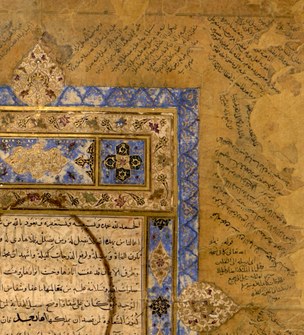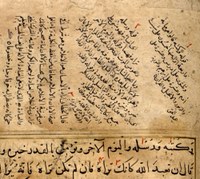On the production, transmission, and reception of Arabic literatures
The macro-perspective looks at long-term phenomena and broad geographical areas. Developments of literary genres and text types are studied, along with transregional relations between networks of scholars and the contexts of book production. A number of exemplary case studies will be dedicated to genres and text types that until now have been neglected in literary studies, examining their production, transmission, and reception based on manuscripts.
The first exemplary individual project is dedicated to the genre of Ḥadīth commentaries, Sunnī and Shīʿī alike. Despite of the enormous production of commentary literature between 1150 and 1850, this genre has nevertheless received only limited scholarly attention. It embodies, though, centuries of Islamic intellectual life, both ensuring the preservation and transmission of Ḥadīth texts and re-inventing them within contemporary contexts.
Exploration of this genre will take the following principal approaches: 1) surveying the production, transmission, and popularity of different Ḥadīth commentaries, mainly based on manuscript catalogues, and 2) investigating related activity through close reading of Ḥadīth commentaries recorded in the margins of selected manuscripts.
The bird’s eye view – distant reading:
This approach surveys the production of Ḥadīth commentaries and their dissemination and popularity at specific times and in particular regions, mainly on the basis of manuscript catalogues. By systematically analysing manuscript production and transmission from Africa to India and Southeast Asia (and beyond), the project aims to map different types of commentaries over the centuries in different regions, to discover and highlight unknown and unedited commentaries, and to observe developments, changes, and continuities in terms of production and transmission. Accordingly, such developments will be evaluated in terms of the extent to which they mirror political, economic, ideological/ religious, or social changes. This first module will integrate information on manuscript notes from the micro-perspective of the Bibliotheca Arabica, exploring who the readers of these texts were, and who were the owners, collectors, or others who worked with the relevant manuscripts.
A view from within the texts – distant and close reading:
Marginal commentaries in Ḥadīth manuscripts have received little attention, even though they are part of the narrative of the history of literature. Manuscript commentaries that appear in the margins or between the lines represent a separate space for literary production, transmission, and reception. Texts that could later become stand-alone texts may have been partly produced in these contexts as “drafts,” while existing commentaries were sometimes completely or partly transmitted in the margin for various reasons, and their application in the margin shows the scholarly interaction with the main text of the manuscript. The research within this project encompasses both a first codicological typology of marginal commentaries in order to offer a first methodology for the analysis of this material, and a study of their role within the history of literature. This includes commentarial scribal practices in different regions, ranging from Africa to Southeast Asia and beyond.
More information
Micro-Perspective: On the reception and collection of Arabic literatures
Research platform: On people, books & manuscript notes
Follow us on  https://twitter.com/BibliothecaAra1
https://twitter.com/BibliothecaAra1
Contact
Dr. Stefanie Brinkmann
Saxon Academy of Sciences and Humanities
Karl-Tauchnitz-Str. 1
04107 Leipzig/ Germany
brinkmann@saw-leipzig.de


